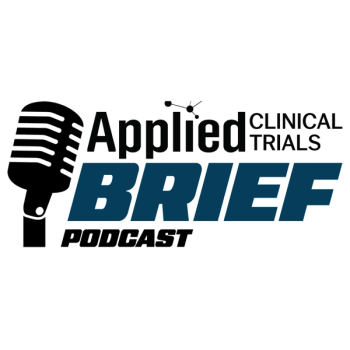Summary
Protocol complexity is rising across therapeutic areas, driving costly delays and frequent amendments—now affecting 76% of trials. New guidance emphasizes early cross-functional collaboration, site and patient engagement, and proactive planning with regulators to avoid disruptions. Practical strategies like mock site run-throughs, flexible logistics, and built-in patient support are becoming essential to managing trial operations efficiently.
Clinical trials are growing increasingly complex. From the dramatic rise in advanced modalities, such as cell and gene therapies, to the growth of rare disease studies and personalized oncology trials, protocols are becoming exponentially more intricate. As a result, trial designs are also becoming more complex, involving a greater number of endpoints, increased eligibility requirements, multiple biomarkers, and often amendments that can slow progress.
While these innovations offer remarkable promise, increasing protocol complexity also introduces opportunities for enormous risk. If the management of a clinical trial does not keep pace with scientific advancements the consequences can be painful. Every day a clinical trial is delayed, sponsors face skyrocketing costs and lost revenue opportunities. According to new data from the Tufts Center for the Study of Drug Development (CSDD), delays in clinical trials can cost sponsors around $800,000 per day—and for a blockbuster new drug projected to generate $1 billion annually, it could lose approximately $2.7 million for every day it is delayed. But even such staggering costs do not fully capture the ripple effect of lost first-mover advantage or patients missing out on potentially life-changing interventions.
Yet, complexity continues to balloon. The total endpoints for clinical trials have nearly doubled over the past decade, and the number of procedures has escalated by more than 40%. Meanwhile, protocol amendments have grown steadily as well—76% of Phase I-IV trials now require amendments, up from 57% in 2015 and these changes cost anywhere from $141,000 to $535,000 each—not including indirect expenses from delayed timelines, site disruptions, and increased regulatory complexity. Why are there so many changes? The biggest culprit is because protocols are not optimized from the start to account for unforeseen realities.
Tack on the extensive logistical demands of novel personalized and cell and gene therapies—from manufacturing to chain-of-identity tracking and long-term follow-up requirements—the challenge becomes even more complicated.
“Medical science is evolving at seemingly lightspeed, which is exciting but challenging. For instance, we are working on a novel therapeutic radiopharmaceutical, and the science is particularly complex and requiring unique logistics and imaging capabilities,” said Christine Redmond, MPH, vice president of clinical operations and program management for Ratio Therapeutics. Ratio is expecting to enroll a first patient into a first-in-human Phase I/II trial (ATLAS) for its investigative radiopharmaceutical targeting soft tissue sarcoma, a rare type of cancer, in 2025.“Oncology studies are known for being very complex with multiple imaging studies and assessments to support the various endpoints, but radiopharmaceuticals add to the demands, and the radioactive nature of the product requires creative, out-of-the-box thinking.”
Redmond continued, “There are many factors contributing to the increase in clinical research complexity, including more stringent regulatory considerations and companies wanting to achieve more within each trial. This desire to learn more with each individual study leads to increased complexity in trial design. As companies add design elements and endpoints, it has a knock-on effect as to the number of vendors involved in a single trial. Over the past 15 years, the number of vendors has grown from four or five, to more than a dozen per trial. And because radiopharmaceuticals require “just-in-time” manufacturing and delivery of doses for patients, there are more factors to be considered and managed.”
Success amidst the jigsaw puzzle of today’s clinical trials
In such a dynamic and complex environment, accelerating a trial from concept to approval requires more than simply following a standard playbook. Rather, it takes a thoughtful, holistic approach plus a willingness to challenge assumptions. Sponsors and their partners must also design trials that work for regulators, sites, and patients, right from the start.
Based on lessons learned from decades of experience across hundreds of trials, here are seven specific best practices that can help bring even the most complicated trials over the finish line:
1. Take a multidimensional view from the start
Complex trials cannot be approached from a single vantage point. Regulatory, medical, clinical, statistical, operational, and even payer perspectives should be considered in parallel, not in silos.
Sponsors often benefit when a cross-functional team challenges their initial protocol assumptions. For example, when a Veristat medical writer offered up suggestions to help improve a client’s protocol design, the sponsor was grateful for such a holistic approach, and addended some of our suggestions that ultimately improved the protocol design. As a result, the protocol was designed to better anticipate regulatory, operational, and clinical challenges before they became too difficult to manage efficiently.
“Early engagement with experts is critical to a successful trial design. More than a year in advance, Ratio began engaging with key opinion leaders for a clinical advisory board, attended patient advocacy meetings, consulted with statisticians, and regulatory consultants. We continue to work as close collaborators with these groups—an approach that has allowed us to keep leverage valuable insights from industry experts when designing our trial.”
2. Plan with the end in mind
Sponsors often focus on the early trial phases without aligning those efforts to their broader corporate goals. Whether the plan is full commercialization or licensing to a partner after Phase II, early decisions matter.
“Everyone must understand the goals for effective trial design and planning,” explained Redmond. “We specifically designed our trial to put us in the best position to make smart decisions and transition into later stage trials. For instance, we added design elements to allow for the collection of additional patient data over time plus a few key assessments to collect preliminary data of interest. These small considerations put us in a better position to recognize whether we need to study these data points further in future trials, or even be able to waive an FDA requirement if the data collected to date is sufficient to fulfill a particular requirement.”
Building a protocol with the final objective in mind, including geographic markets, potential pricing models, and the data package needed for market access, helps streamline development. Thinking with the end in mind from the beginning also helps align endpoints and patient eligibility criteria to support later success. Also, engaging regulators early, even while protocols are still under design, can help avoid costly amendments later.
3. Collaborate early and often
One of the most common problems in complex trials is that key decision-makers arrive late at the table. If a corporate leader reviews a protocol only at the final draft stage, for example, they may change direction in ways that undermine months of work and delay the entire timeline.
A truly collaborative trial team should include all sponsor decision-makers, site representatives, data experts, regulatory strategists, and patient advocates as early as possible. Keeping these stakeholders involved and engaged through governance meetings, feedback loops, and transparent updates is essential to ensuring that the trial movies forward without expensive roadblocks or diversions.
4. Work in lockstep with sites
Study sites are the beating heart of any clinical trial, yet they are often overlooked when designing studies. Innovative approaches, such as adaptive trials or enrichment cohorts, can be confusing for site staff—particularly if they involve interim analyses or multiple decision gates.
In one adaptive oncology trial, site investigators were initially hesitant about complex enrichment and futility design. To address this, the trial team created a simple, visually driven training program, with statisticians attending site investigator meetings to walk investigators through how the trial would operate. This kind of hands-on approach builds confidence, supports enrollment, and helps to keep the study on track.
“For the ATLAS study, we have several sites across the US and Canada that all contributed to the trial design. Their expert contributions and perspective have been vital to our protocol design and planning” added Redmond. “Our sites are experts in the field of Sarcoma and nuclear medicine and were able to communicate key scientific and logistical considerations that influenced our trial design. We have developed and maintained close relationships with PIs and research staff, and that has significantly contributed to our success.”
5. Build patient-centric flexibility into the protocol
Fundamentally, patients are the lifeblood of any clinical research effort. Yet protocol complexity often translates into burdens that make participation harder, leading to drop-out rates between 15-40%, and even 50% or higher in some studies.
Designing trials with patient experience in mind can improve both recruitment and retention. For example, in a small, ultra-rare pediatric gene therapy study, a family from Brazil was spared the burden of repeated travel to the US by working with their local physician for certain aspects of the protocol.
“Patients are our most important focus, and in an oncology study, they are also very sick, so we work hard to minimize their burden,” said Redmond. “To that end, we incorporate an electronic patient reported outcomes (ePRO) tool, swap in-person visits for remote visits, where appropriate, and contract a patient concierge service to make arranging for patient travel easy and receive reimbursement and/or stipends immediately.”
While it may seem simple, such practical elements can often get lost in the fog of trial complexities. Remote visits, ePRO diaries, telehealth check-ins, vouchers, and other conveniences for the patient can go a long way toward offsetting the logistical burdens that are so often a hinderance to trial participation. Trial teams should also actively seek patient advocacy input on burden, trust, and barriers to participation, especially in rare and underrepresented populations.
6. Engage regulatory authorities early
Complex trials benefit enormously from early and ongoing dialogue with regulators. Adaptive designs, decentralized models, and novel endpoints all require regulators’ confidence and buy-in.
In one Phase III oncology trial, regulators were engaged from the outset, and it was because of this that they were convinced that the endpoint data was robust enough to support an accelerated pathway. That early engagement turned what might have been an impossible-to-approve design into a regulatory success story.
“Some sponsors like to engage regulators in advance, others do not,” explained Redmond. “However, when you have a novel product and a complex trial deign, it is critical. We spent almost a year planning and engaging with FDA in advance of the IND submission. This level of engagement ensured that we were aware of all FDA concerns, able to address them, and gain alignment ahead of the IND submission to avoid delays later in the process.”
7. Creativity and flexibility are key
Complex trials rarely unfold exactly as planned. Sponsors and their partners must anticipate challenges and create an environment that supports flexibility. Ratio, for example, often does ‘practice runs,’ to simulate the trial conditions and uncover any potential issues with imaging technologies, drug delivery, or logistics, in advance of first-patient-in.
“We worked alongside our vendors to conduct phantom studies to calibrate and validate imaging equipment, did “mock” shipping studies, so sites would know how and when the material would be received and be familiar with the shipping containers and procedures for dose calibration. It’s well worth the up-front investment, as sites can become familiar with our processes and we are able to minimize issues to ensure things run more smoothly once the patient is involved,” said Redmond.
In another example, a pivotal Phase III trial faced a potential three-month delay to database lock, jeopardizing its New Drug Application (NDA) submission. The contract research organization (CRO) found a solution working with statisticians, medical writers, clinical teams, and the sponsor in real time to analyze interim data cuts and live-editing sessions so the trial could maintain its submission timelines. This kind of creative approach helped to overcome what might have been a catastrophic challenge to keep the NDA submission on schedule.
The ability to break out of a rigid playbook, think critically, and build new solutions in real time is a defining characteristic of high-performing teams in today’s clinical trial environment.
Meeting complexity with confidence
The clinical trial landscape is likely to continue to grow in complexity. Cell and gene therapies, radiopharmaceuticals, precision oncology, and rare diseases will continue to push the boundaries of what trial designs are forced to accomplish, and industry must be prepared to meet the challenge.
The standard, cookie-cutter approach to trials no longer cuts it. Overcoming these new and dynamic challenges requires a fresh mindset: one that is multidimensional, collaborative, patient-centered, and highly creative. Sponsors and their partners must challenge assumptions, engage stakeholders early and often, and develop protocols with the end goal in mind.
“Modern-day trials are not going to get easier. Making an investment in high-touch, close partnerships between a sponsor, its vendors and sites—and not just leaving everything on the shoulders of the CRO— can help, and potentially lead to faster approvals of life-saving medicines,” concluded Redmond.
The throughline of these efforts is a commitment to thinking beyond our traditional silos. When scientific, operational, and patient perspectives are woven together seamlessly, even the most complex trials can move more efficiently and with greater confidence and, ultimately, success.
Creative thinking, supported by transparent communication and integration, is the mechanism for turning this complexity into possibility—and that possibility can ultimately help us reach the life-changing outcomes we all want to provide to those in need.
Cindy Henderson, chief strategy officer, Veristat





